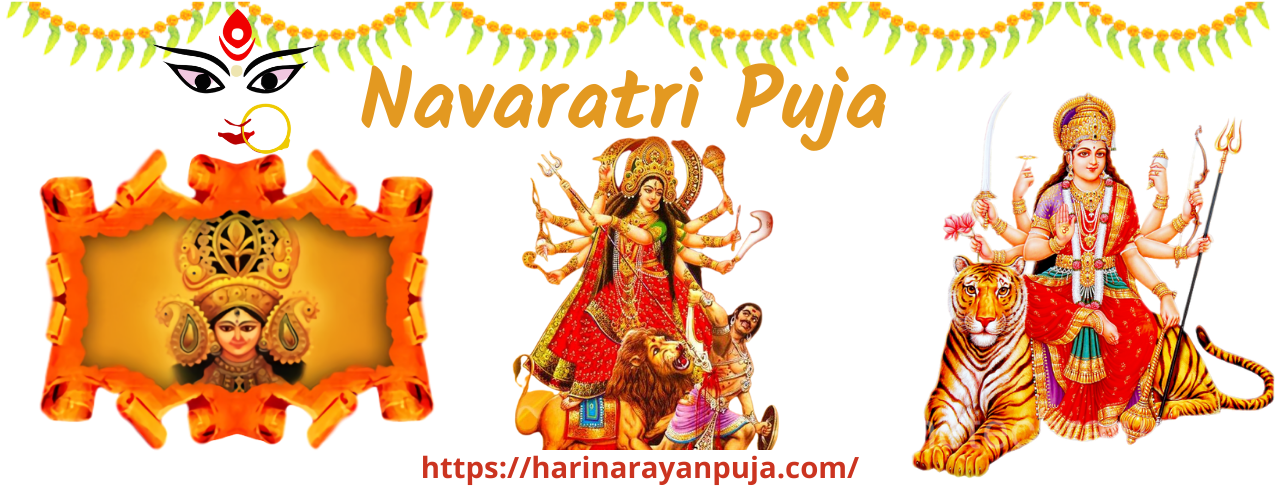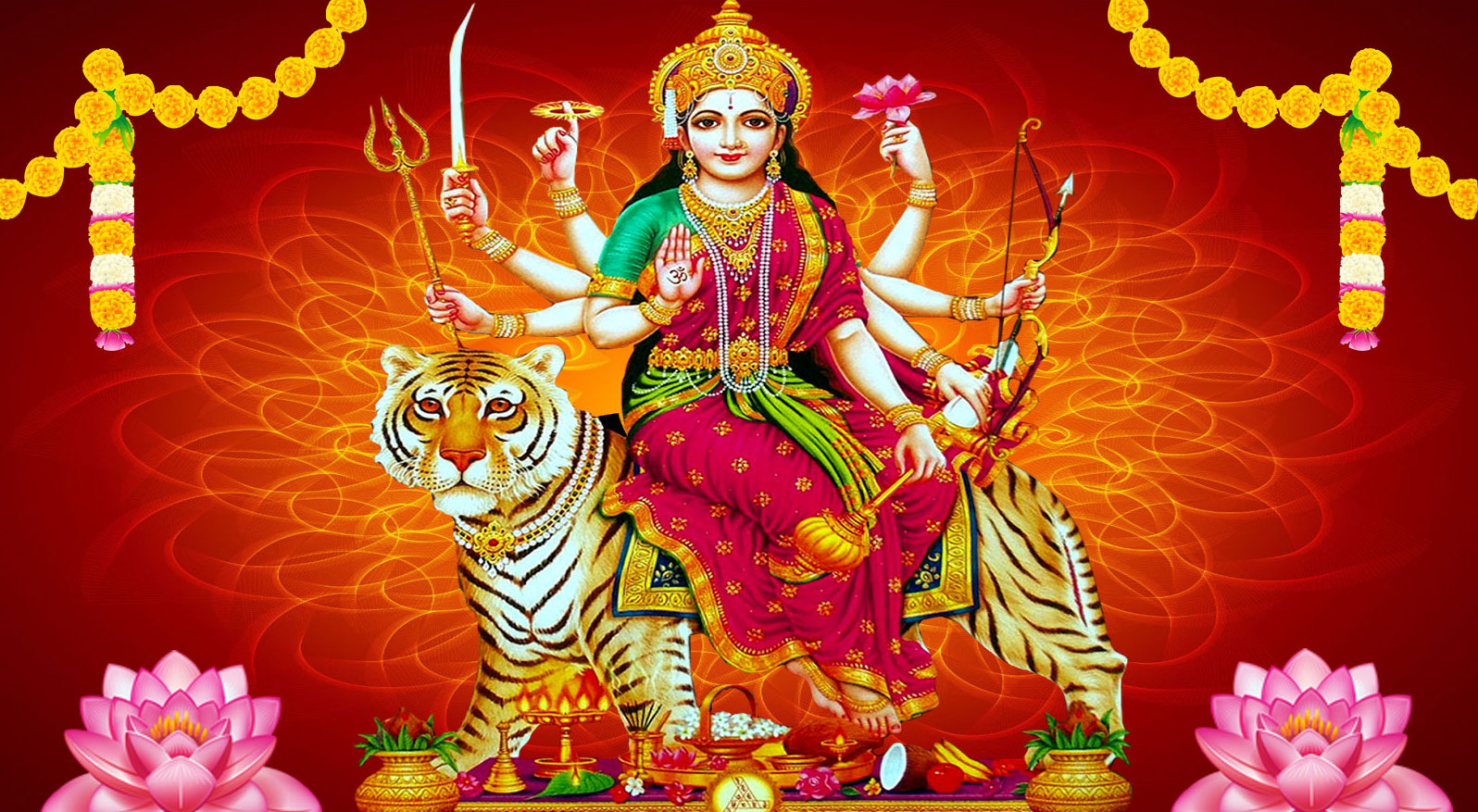

The festival of Navratri is celebrated in the wonderful presence of Mata Durga, and the Kalash Sthapana puja is held on the first day of Navratri to honour her. The ninth day is dedicated to Havan, and it is extremely auspicious and helpful to complete the Chandi route during the festival of Navratri.
The festival of Navaratri is celebrated twice a year, according to tradition. Observed during the lunar month of Ashvin (post-monsoon months of September–October), Sharada Navaratri is a Hindu festival. During the lunar month of Chaitra (post-winter, March–April), Vasanta Navaratri is celebrated. There are nine nights of festivities during this Hindu holiday, with celebrations taking place in diverse ways in different parts of the Indian subcontinent. The nine days of Navratri are dedicated to the worship of nine manifestations of the Goddess — Shailaputri, Brahmacharini, Chandraghanta, Kushmanda, Skandamata, Katyayani, Kaalaratri, Mahagauri, and Durga — each of whom has a different name.

Navratri is one of the most important Hindu holidays. Throughout the country, this significant occasion is commemorated with full devotion. The precise translation of Navratri is “nine auspicious nights.” Navratri is a religious festival observed for nine days in honour of nine various forms of the Goddess Durga, Lakshmi, and Saraswati. During these days, the Goddess of Power is worshipped in order to obtain her blessings and protection from any unknown fear or potential threat. The devotees pray to the Goddess for peace and prosperity. The Goddess of Power rules over the universe’s creation, preservation, and destruction.

Shailaputri Day 1: Welcome!
As Pratipada (first day), this day is associated with Shailaputri (“Daughter of the Mountain”), a manifestation of Parvati who is considered to be a goddess. Durga is worshipped as Shiva’s wife in this form; she is represented as riding the bull Nandi, holding a trishula in her right hand and a lotus in her left, and she is riding the bull Nandi. It is said that Shailaputri is a direct incarnation of the goddess Mahakali. Grey is the hue of the day, and it represents activity and strength in general.
Brahmacharini is the second day.
Goddess Brahmacharini, another avatar of Parvati, is worshipped on the second day of the month of Dwitiya. Parvati assumed the form of Yogini, her unmarried self, in this state. Brahmacharini is revered for her role in emancipation, or moksha, as well as her role in the blessing of peace and wealth. A barefooted woman with a rosary in her hand, as well as a pot in her hands, she is depicted as representing bliss and tranquillity. Blue is the colour of the day on this particular occasion. Despite the fact that the colour orange, which represents peace, is occasionally employed, there is a great deal of energy flowing throughout.
Chandraghanta is the third day.
It is the third day of Tritiya (three days) that commemorates the worship of Chandraghanta – a term derived from the fact that after marrying Shiva, Parvati inscribed the ardhachandra on her forehead (lit. half-moon). She is the epitome of beauty, as well as a symbol of bravery and strength. White is the hue of the third day, and it is a vibrant colour that may lift the spirits of anyone who sees it.
Kushmanda is the destination on the fourth day.
On the occasion of Chaturthi, Goddess Kushmanda is worshipped (fourth day). Known as the creator of the universe, Kushmanda is associated with the creation of vegetation on earth, and as a result, red is chosen as the day’s colour to symbolise this association. A tiger is represented as sitting on her back, and she has eight arms.
Day 5-Skandamatra National Park
She is the mother of Skanda, and she is the goddess who is worshipped on Panchami (the fifth day) (or Kartikeya). In times of danger, when a mother’s transformative strength is called upon, the colour Royal Blue is used to represent this. She is pictured riding a fearsome lion, carrying her infant in her four arms, and riding a lion.
Katyayani is the sixth day of the week.
She is an incarnation of Durga who was born to the sage Katyayana. She is depicted as having great courage, which is reflected by the colour yellow. She is referred to as the warrior goddess and is thought to be one of the most violent manifestations of Devi. Katyayani appears in this incarnation, riding a lion and wielding four hands. She is a combination of the goddesses Parvati, Mahalakshmi, and Mahasaraswati. Shashtami is the day on which she is commemorated (sixth day).
Day 7-Kaalaratri (Festival of Lights)
Kalaratri, considered to be the most violent manifestation of Goddess Durga, is honoured on the day of Saptami. In order to kill the demons Sumbha and Nisumbha, it is believed that Parvati had her fair skin erased. This morning’s colour of the day is lime green. The Goddess appears in a red-colored gown or tiger skin; her blazing eyes are filled with fury, and her skin turns black as a result of her rage. The colour red represents prayer, and it assures believers that the Goddess will protect them from harm if they wear it. Saptami is the day on which she is commemorated (seventh day)
Day 8-Mahagauri (Madagauri)
Mahagauri is a Hindu deity who represents intellect and serenity. It is reported that after taking a dip in the Ganga river, Kaalaratri’s skin lightened dramatically, compared to her previous darker complexion. The colour linked with this day is Peacock Green, which symbolises hopefulness and possibility. Ashtami is the day on which she is commemorated (eighth day).
Day 9-Siddhidatri is celebrated on this day.
Siddhidhatri is honoured on the final day of the festival, which is also known as Navami (ninth day), by offering prayers. Sitting on a lotus, she is thought to possess and impart all forms of Siddhis, and she does so while sitting on the lotus. She has four hands in this position. The purple hue of the day, which is also known as Mahalakshmi, represents awe and respect for the majesty of nature. Siddhidatri is Parvati, the wife of Lord Shiva, who is also known as Siddhidatri. Siddhidhatri is also known as the Ardhanarishvara form of Shiva and Shakti, and she is the consort of Shiva and Shakti. It is thought that the Goddess Siddhidatri’s side of Lord Shiva’s body is on one of his limbs. As a result, he is sometimes referred to as Ardhanarishwara in some circles. According to Vedic literature, it was through the worship of this goddess that Lord Shiva gained all of the siddhis.
WhatsApp us
Sign up to receive updates, promotions, and sneak peaks of upcoming products. Plus 20% off your next order.